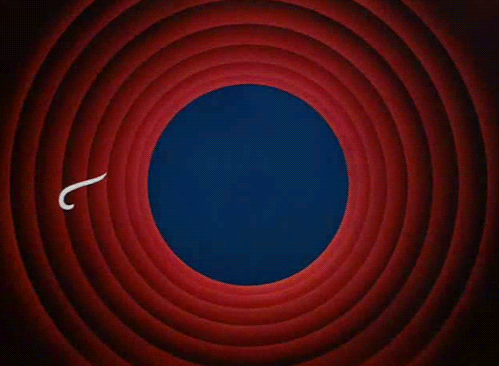Chances are if you've recently gone through the website design process you're hoping that you won't ever have to do it again. Maybe you felt the whole process was long and grueling. Or perhaps you weren't happy with the final results. Add to that sentiment the fact that you probably spent anywhere between 20 and $40,000 for your brand new website, and now we start to see why people would rather just launch the site and never touch it again.

Unfortunately, I have to be the bearer of bad news here. Your website design does have a shelf life. A website isn't like a logo in that you can wait 35 years before updating it for a new generation. Your company’s website is sort of a living, breathing organism. One that stands in as a sales and marketing tool 24/7, while the rest of your workforce has gone home or to happy hour. It's not all doom and gloom though. Just because you just redesigned your entire website doesn't mean you have to throw it out in 18 months. The key is to take a more iterative approach to website design.
The Iterative Web Design Process
Define
Before you can do anything with your new website you need to plan how you're going to get there. What steps are you going to take to reach success? What does success even look like in a web design? The first thing you need to do is to define the goals of your website design.
I've done this before so I'll help you out a little bit. Many customers who come to us in search of a new web design all share a few common goals:
- Increase sales. Sales are tied to leads, which is tied to traffic. So you’ll want a website that is going to rank organically in search engines and have plenty of content
- Become a thought leader. People learn in a multitude of ways, so your website will need a well thought out content strategy that includes video, written and other types of content.
- Build your online brand. Being that brand is such an overarching term, this can mean a lot of things, so defining what it means for you early on is key.
The example goals above are just a few I have come across in my time redesigning websites. Your goals may be similar or differ in a way that fits with your organization. Whatever your goals of a website design are, they should be S.M.A.R.T.; specific, measurable, attainable, relevant, and timely.

The Define stage of the iterative process isn't only about goals however. This is a time when you should decide things like: which stakeholders should be present throughout the process, who's going to be responsible for managing the day-to-day relationship with your partner agency, and creating a realistic timeline. It's true some websites can be launched in as little as two weeks. But in most cases that's an MVP or minimum viable product. For larger websites, you should expect to spend anywhere between 60 and 90 days working on your website design alongside your agency ahead of launch. Plan accordingly.
Build
Moving on from the Define stage we enter the Build stage. This is where everything is planned out from a structural, functional, and content standpoint. From a design angle you'll be working on wireframes and high fidelity comps. From a pre-development angle, you’ll likely discuss functionality and user experience as well as the tech stack needed to achieve the desired results. And finally from a content perspective, you’ll likely cover everything from a blogging strategy and service page content to landing page forms and gathering testimonials from satisfied clients.
The build stage really does account for most of the time spent redesigning your website. So lets breakdown the pieces above in a bit more detail:
Design
Wireframes are akin to the blueprints of a home. They help illustrate where the various elements of a website will live in relation to others. At Impulse Creative we like to wireframe a few key pages to start. The homepage, an interior service type page, and a landing page. These three page types will do the most work on your website from introducing your brand (homepage) to converting visitors into leads (landing page). Plus starting with wireframes frees you from the distraction of colors, graphics and content. Those all come next.
Moving on from wireframes, you then jump to high fidelity comps where your visual brand - things like fonts and colors - get applied to the wireframes. Doing this early on in the process lets developers know what to expect - and what to build - and provides subject matter experts a framework for where content should go.
Content
At about the same time design is being crafted and approved, content begins. Using content surveys, a subject matter expert will discover the intent of each page in your sitemap as it pertains to the goals outlined during the define stage. Everything from top of funnel, awareness stage content, to bottom of funnel, decision stage content will be defined and developed. In most cases this requires a fair amount of time from the stakeholders representing your company in the web design process.
Another important note to consider regarding content: good content is good user experience. By crafting website content that is easy to understand, and skips on the heavy marketing jargon, your users will spend less time searching for the answers they need and more time making contact with your salespeople. Even the words you choose to put in key areas like buttons or the navigation can play an important role in reducing bounce rates and upping conversions.
Development
For the most part, the development of your website - that is the steps it takes to make it work - happens behind the scenes. It does affect the price of a website design project however, so knowing what’s going into your tech stack is something a good agency will outline for you. What platform will you use to develop your website? How will you manage contact info? Do you need a database to deliver a lot of pieces of similar content? Much of this will be discovered and scoped out during the define stage as the technology you need is directly tied to the goals you’ve outlined.
The Build stage is probably one of the longest parts of the iterative web design process. And it’s often during this phase when stakeholders begin to lose interest or feel like they just want to launch the website already. But good things take time. Plus being involved in the creation of your website kind of puts you in the driver’s seat. If you’re quick to approve things sent to you by the agency, then they’ll be quicker to move to the next phase.
Deploy
Once the layouts have been developed, colors, photography, and fonts have been settled, and content blessed - we now move into the deploy phase of the project. The web design agency is in go mode. Pages defined in the sitemap are being implemented with all the necessary assets - text, images, and the like - and a round or two of quality assurance is taking place to make sure your website scales from desktop to mobile device. Once things are set and you and your team have approved, it’s time to launch the website. Flip the switch as it were. Your website is now live on the internet.

The deploy stage can be fairly painless, but none the less intimidating. Are you really ready to relaunch your brand on the web? Is this website redesign everything you had hoped for? So many questions can linger. Just rip the bandage off! Because, guess what? This is an iterative website design project after all. You’ve only launched phase 1. On day two after launch, its now time to start thinking about and executing phase 2. What, there’s more? Yes. Remember the premise: your website design has a shelf life. What you launched yesterday won’t be good enough tomorrow; only slightly exaggerating.
Evaluate & Improve
It’s tomorrow already, and now you’re beginning to see things you want to add to your newly redesigned website. Perhaps it’s a more robust resource section that features video content and a host of free downloadable infographics. Or maybe you want to deploy some sort of live chat feature to better help visitors coming to your website? These questions and more really are what define the iterative web design process. Your goal with your website should be to be constantly evaluating and improving. The grocery store doesn’t keep the same loaf of bread on the shelf long after it has molded. The same can be said for your website strategy.
Metrics like time on page, traffic (organic or referral), and the mother of all stats conversion rate, should be checked on 1 week, 1 month, and 1 quarter after launch. Maybe more if you’re the really analytical type. Using these numbers, and more importantly seeing where on your site these numbers rise and fall, you can make decisions about which parts of your website you need to improve or add to. Maybe the homepage didn’t have a key conversion point at launch. It is during the evaluate and improve phase of the iterative website design process, that you’ll uncover and remedy these types of issues.
Conclusion
At the risk of sounding like a broken record, I’ll reiterate (see what I did there?): you can’t just set it and forget it. Your website is a living, breathing marketing and sales machine. Feed it by taking the time to analyze what works and what doesn’t and then pivot. And if the agency you’ve partnered with ghosts you after launch, you probably should rethink who you partner with. A good web design agency worth their weight, will help you plan and execute a web design that does more than sit in search results. Before, during, and after launch.





